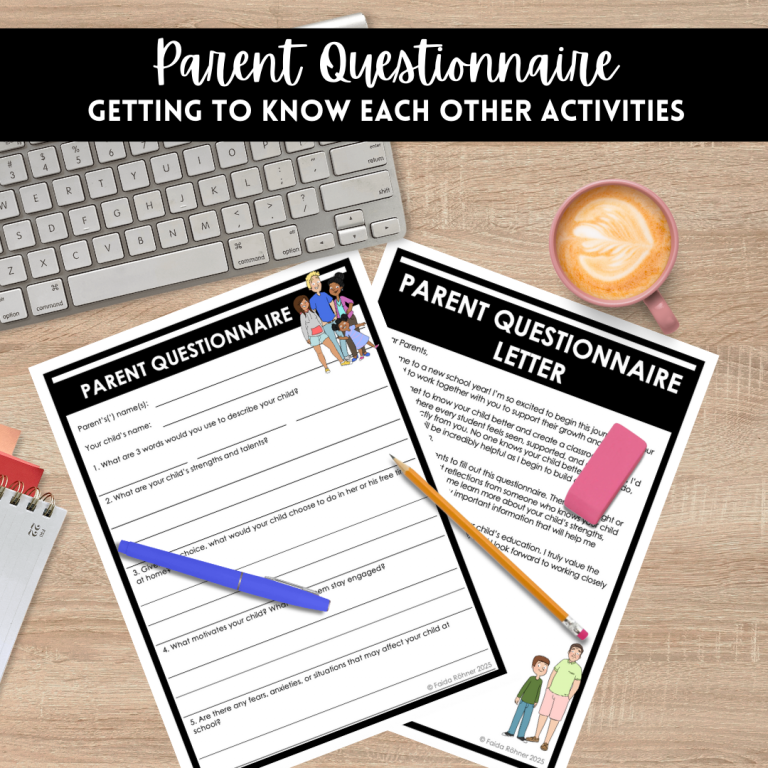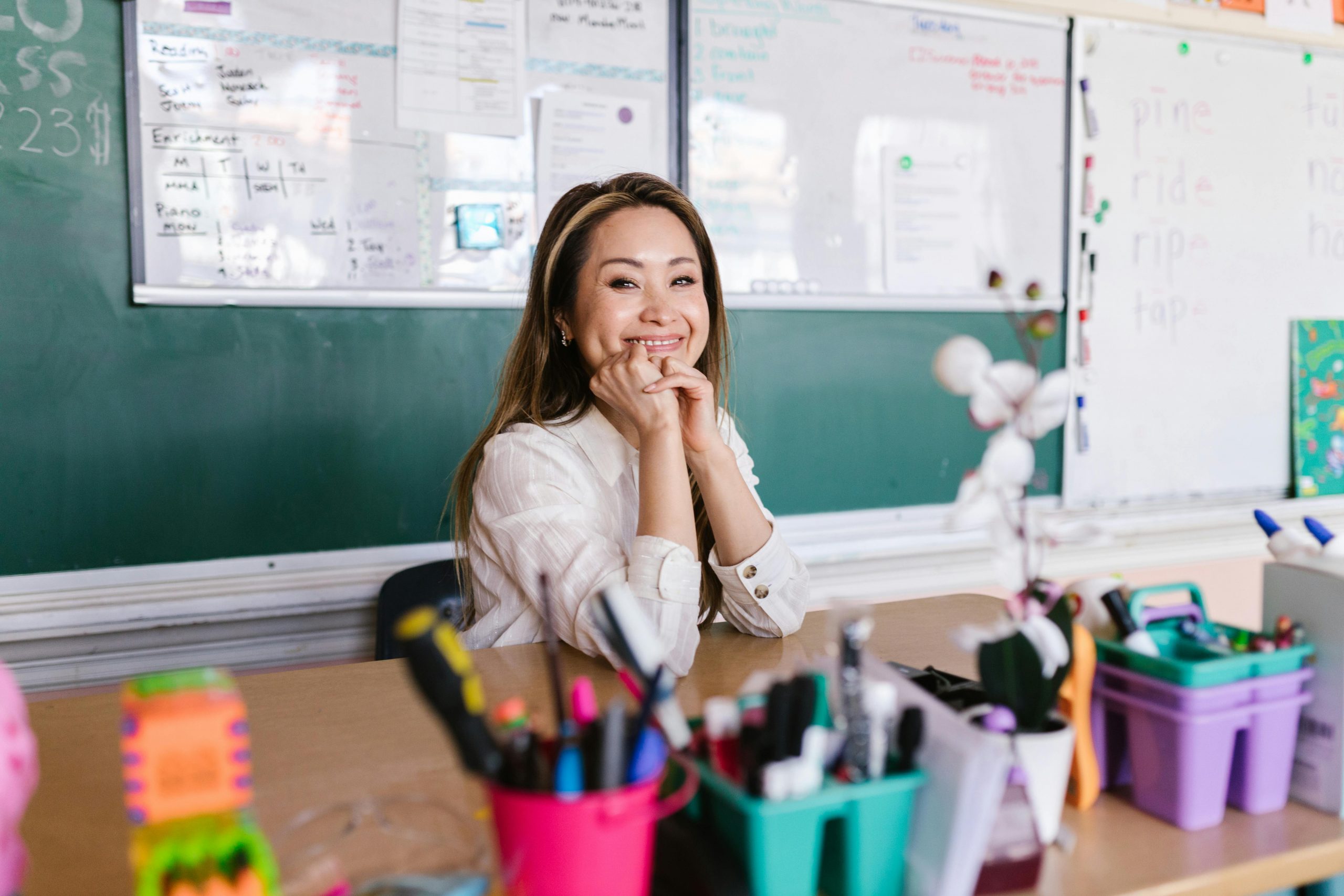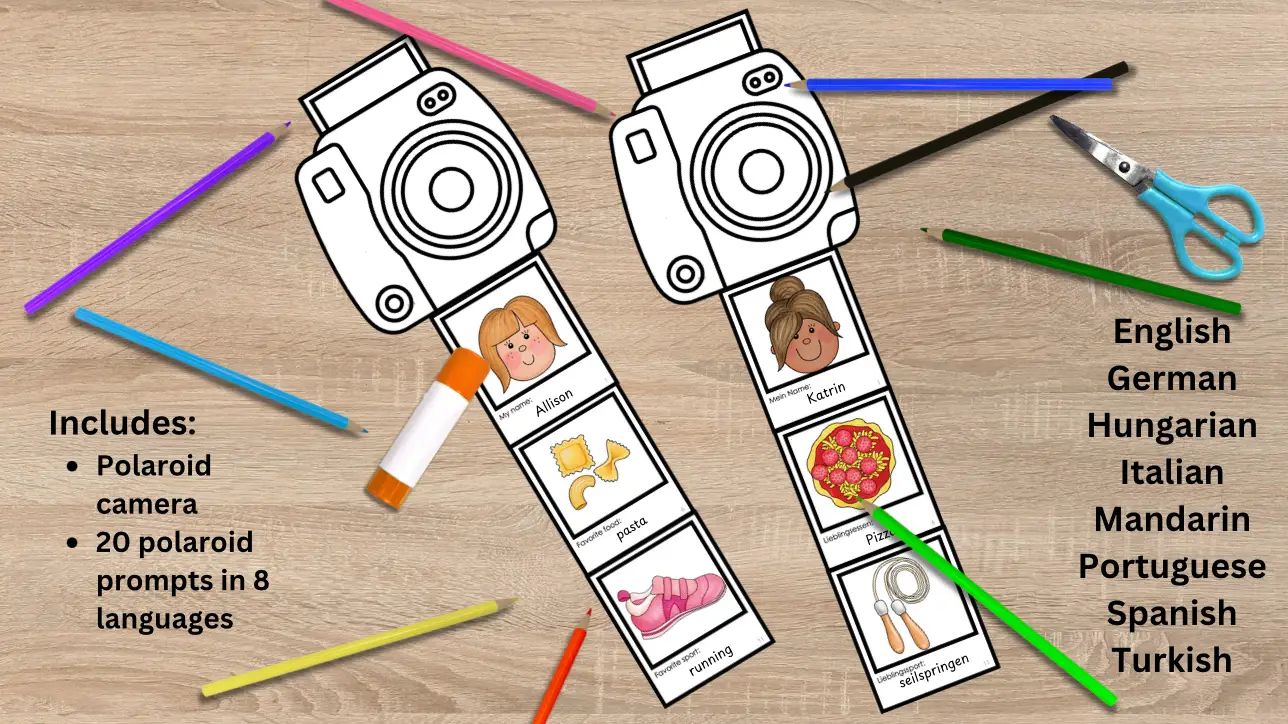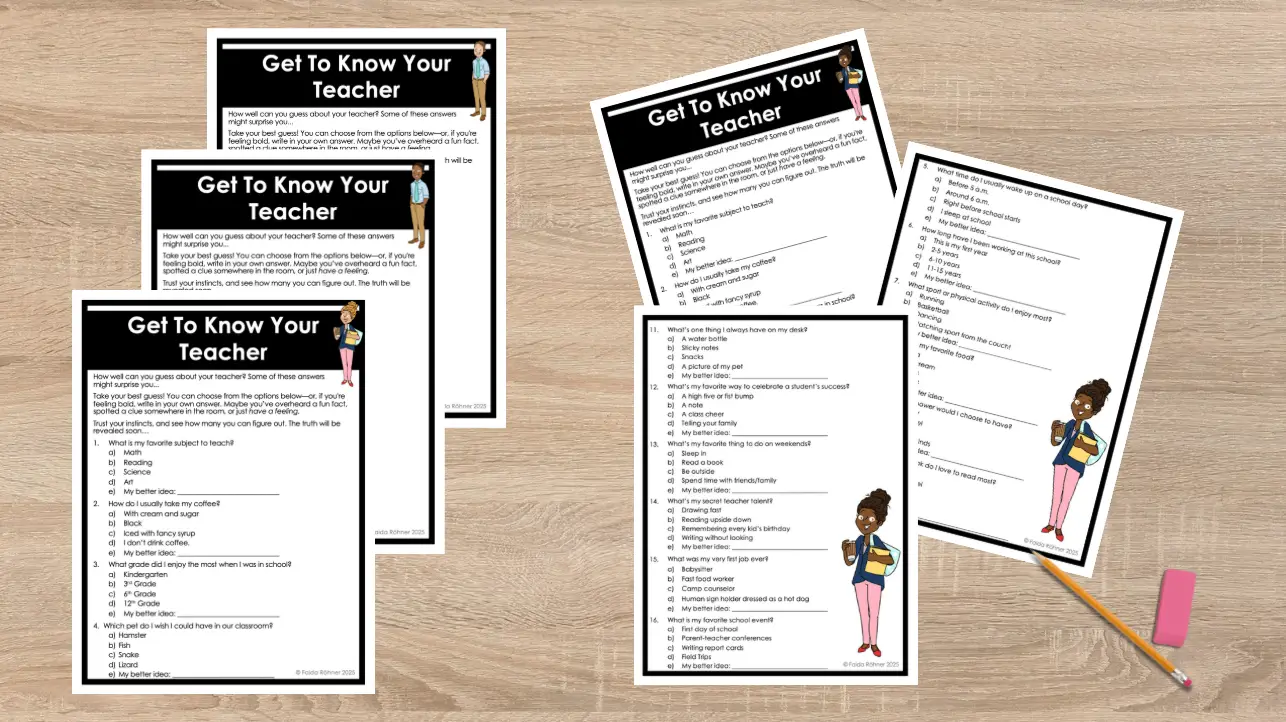The first day of school is always a mix of excitement, nerves, and “Wait…how should I fill all these hours with meaningful activities?” (Anyone else still have that dream where you show up with no plans and 27 pairs of eyes staring at you?…Just me?)
At my school, we don’t have specials on the first day, which means I have my students all day long. On one hand, it’s an incredible opportunity to build community and get to know my new learners. On the other hand, if you don’t have a plan, the day can feel very long.
That’s why I’ve leaned on these first day lesson plans for upper elementary for years. They’re engaging, easy to prep, and they give me a great transition into routines and expectations. If you’re looking for first day activities that balance fun with structure and skill building, this one’s for you.
Morning Stations
I always start my first day lesson plan for upper elementary with stations. This is my go-to first day activity. It helps me circulate, chat with students one-on-one, and support new students with settling in. Plus, it gives students something meaningful to do right away—no awkward hovering or “what do we do now?” moments.
Collage for Skills Binders
Students create a collage of words and pictures that represent them. I use binders to organize their skills throughout the year, so this becomes the perfect personal cover. This is a great way for students to keep track of skills you’ve taught, that they can use over and over again. Think mapping skills, research skills and writing skills. All you need are binders, magazines, scissors and glue sticks. As a first day of school activity, I also have students put in their table of contents and subject dividers. If you would like a copy of this organization binder I use, you can purchase it at my TPT store here.
Name Signs for Lockers or Cubbies
A fun way for kids to personalize their space and give the room some instant color. You can print student’s names in big bubble letters, give them colored pencils, markers, or crayons as well as scissors, and you have an easy, personalized decor. I recommend laminating the name tags to help them last throughout the year.
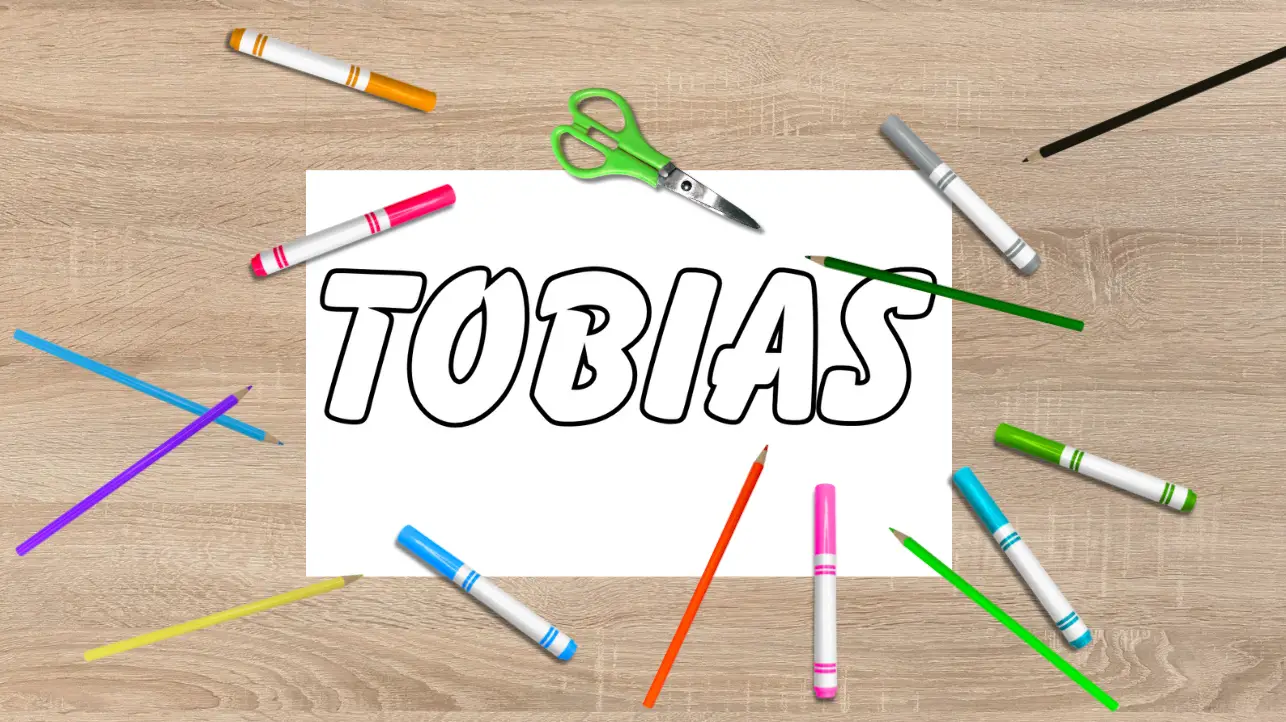
Student Survey
Great way to get to know your students and how they learn best. The questions give students a voice, helping you learn about their interests, learning preferences, and goals.
Essential Agreement Questions
These kick off one of the most important parts of our classroom community. If you’re not familiar, an essential agreement is not a list of rules. Instead, it’s a shared set of commitments created by students and teachers together to make the classroom a positive, respectful place to learn. To get students thinking, I ask these guiding questions/statements:
- School is important because…
- I can do my best learning when…
- I feel included when…
- One thing I’m excited about this year is…
- One thing I’m nervous about this year is…
- Everyone in our class should be able to…
-
I feel supported when…
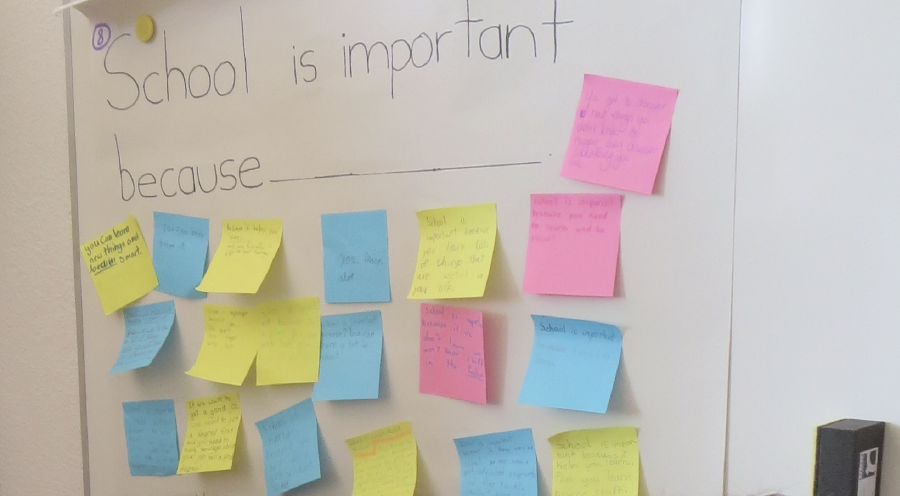
I always model my own answers—because I’m part of our community too, and it shows students the type of thoughtful responses I’m looking for. Later, we turn these answers into our essential agreement, making sure every student’s needs and ideas are reflected.
Buddy System for New Students
Implementing a buddy system is an essential part of my first day lesson plans for upper elementary. The buddy system helps new students start building connections right away. This is not an official station, but I use this time to check in with students. This system is designed to help new students feel welcome and supported, while giving returning students a meaningful chance to develop leadership and social skills. Buddies help each other navigate routines, meet classmates, and feel like part of the community from day one. It’s simple, effective, and sets a tone of kindness and inclusion right at the start of the year. If you would like more information on how I help new students settle in, check out my blog post, Welcoming Students the First Day of School.
All About Me Activity
“All About Me” tasks are a first day activity classic—and for good reason. They let students share who they are while giving you insight into their personalities and strengths.
Because I’ve taught in international schools, I’ve had students who arrive on day one with limited English. Imagine how scary it feels to sit down in a classroom where you’re unsure what you’ll understand… and how comforting it is when the activity is available in your own language.
That’s why I created my Multilingual All About Me Polaroid Camera Craft. It’s an inclusive, creative way for every student to express themselves—whether through art, words, or a mix of both.
You can buy my Multilingual All About Me Polaroid Camera Craft here. It’s great for any classroom environment with English Language Learners, international students and foreign language classrooms. It includes versions in:
- English
- German
- Hungarian
- Italian
- Mandarin
- Portuguese
- Spanish
- Turkish
Circle Time: Games, Books, and Routines
Circle time is one of my favorite parts of the day because it sets the tone for community.
- Name Game: “We’re Going on a Picnic” – Students say their name and something they’re “bringing,” starting with the same letter. (“My name is Sarah, and I’m bringing sunscreen.”) By the time it wraps around the circle, students have repeated names many times—great for memory and lots of laughs.
- Read Aloud: I love reading First Day Jitters by Julie Danneberg to my students on the first day of school every year. This picture book follows Sarah, who is dreading her first day at a new school. She doesn’t want to get out of bed, feels nervous about meeting new people, and worries about what the day will bring. In the end, SPOILER ALERT!!!…the big reveal is that Sarah isn’t a student at all—she’s the teacher! Kids love the twist, and it gives me the perfect chance to share that I also feel nervous on the first day, even though I’ve been teaching for years. It’s a wonderful way to normalize those jitters and build empathy.
- Introducing Key Routines – I like to sprinkle routines throughout the day, but circle time is where I directly teach a few essentials. My favorite: using the American Sign Language sign for “toilet.” It avoids the dreaded “Can I go to the bathroom?” interruption mid-lesson and makes everything run smoother.
For more ideas for routines to introduce at the start of the school year, check out my blog post, First Week of School Routines, Procedures and Helpful Teacher Strategies.
Speed Meeting – A Fast and Fun Way for Students to Connect
Speed Meeting is a play on “speed dating,” but with the focus on student-to-student conversations. It’s high energy, easy to set up, and one of the best ways to help students feel comfortable quickly.
How to Play:
- Arrange the classroom so students can face a partner—either in two lines or two circles (one inside the other).
- Give students a get-to-know-you question (or let them pick from a list on the board). Example prompts include:
- What’s your favorite food?
- Do you prefer books or movies?
- What’s something you’re excited about this year?
- Set a timer for 1–2 minutes. One student asks the question first, then they switch roles.
- When the timer goes off, one line (or the inside circle) rotates to a new partner.
- Repeat until everyone has met several classmates.
Why I Love It:
- It helps students practice introducing themselves in a low-pressure way.
- It encourages active listening and speaking skills.
- It creates a sense of community and inclusion right from day one.
You don’t have to have every student meet every classmate in one sitting—this activity works just as well broken into chunks over the first week. The more students repeat their answers, the more confident they become, and the deeper the conversations tend to go.
And don’t be afraid to jump in yourself! Participating not only helps you build your own relationships with students, it also models how to connect with kindness and curiosity.
Because stations take time, students rarely finish everything in the morning. I like to circle back later in the day—it’s an easy transition and keeps them engaged.
Teacher Quiz – A Fun Game for Students to Get to Know You
After Speed Meeting, I like to flip the tables and let students take a teacher quiz. It’s a lighthearted way for them to learn more about me—and for me to remind them that I’m a real person, not just “the teacher.”
The quiz includes a mix of general and teacher-specific questions (favorite snack, pets, hobbies, dream vacation, etc.), and students can even make up their own guesses if they want. The sillier, the better! It’s all about fun, laughter, and building connections.
I’ve found that this activity works especially well after Speed Meeting, because good conversationalists sometimes pick up hints about me during our partner rounds. Students love realizing they already know an answer or two!
When we go over the quiz together, I invite students to share their guesses before I reveal the real answers. It always sparks conversation, a few laughs, and helps students see me as a whole person—not just the one assigning homework.
Listening to Reading
After lunch, I calm things down with listening to reading. I pick books about friendship, school, or community that help kids make connections:
- 3rd Grade: Because of Winn-Dixie by Kate DiCamillo
- 4th Grade: Tales of a Fourth Grade Nothing by Judy Blume
- 5th Grade: Out of My Mind by
Sharon M. Draper or Wonder by R. J. Palacio - 6th Grade: Freak the Mighty by Rodman Philbrick
If you want more book ideas, I’ve got a whole post on this: Top 5 Ways to Use Literature to Make Real-World Connections.
Problem Solving: An Easy First Day Assessment
Math can be intimidating on day one, because you might not know where to start. There is so much to cover that it can be hard to decide where to begin. But instead of thinking in terms of mathematical topics, or even giving a big, general formal test that can send your students in a panic from day one, consider thinking about critical thinking skills that are useful no matter if your teaching multiplication, subtraction, ratios, exponents, etc. My first day lesson plans for upper elementary always include the same informalI group problem-solving task. It works as an easy first day assessment because it shows me so much more than whether students can add or subtract.
First Day Assessment for Math
I give groups a story problem and challenge them to show as many different strategies as possible to solve it. The goal is creativity and collaboration—not the “right” answer (which is really hard for a lot of students). We discuss strategies together (without ever giving the answer), do gallery walks, and start building our “ways to solve problems” list that we’ll use all year.
What I am Assessing
As I observe, I’m looking for:
- How engaged they are
- How creative their strategies are
- How well they they can discern when some strategies are more applicable than others (For example, drawing a graph isn’t always helpful)
- Whether they share ideas with their group
- If they stick to one method or try multiple approaches
- And yes…I note whether they can get the right answer (but they don’t need to know that!)
This first day assessment task is a low-pressure way to start math while giving me a wealth of information.
I continue this task throughout the entire first week, because it allows me to build a foundation for creative and critical thinking, focusing on strategies, application and evaluation over quick calculation (which does have its place).This part of my first day lesson plans for upper elementary is essential because it sets the tone for math for the rest of the year.
End-of-the-Day Reflection: A Low-Pressure First Day Assessment
I love wrapping up the first day with reflection. Not only does it give students a chance to process everything that happened, but it also works beautifully as a low-pressure first day assessment. Instead of a formal test or structured writing prompt, students get to share their thoughts in a relaxed, personal way. This lets me see how they approach writing—sentence structure, spelling, handwriting, organization, and style—without the stress of grades attached.
Here’s how I set it up
- As a class, we make a list on the board of everything we did throughout the day to jog memories.
- We talk briefly about what makes a good reflection (specific details, complete thoughts, and personal connections).
- I provide sentence starters to support all writers, especially English language learners:
- “I really liked…”
- “I was surprised by…”
- “I am looking forward to…”
- “A special moment that happened today was when…”
This activity helps students internally process the first day, gives parents more than the dreaded “nothing” response at pickup, and gives me valuable insight into their writing skills from day one.
Helping You with Your First Day Lesson Plans for Upper Elementary
The first day of school doesn’t have to feel overwhelming. These first day lesson plans for upper elementary have saved me year after year because they balance structure, community, and fun. They also give me meaningful insights into my students—how they learn, how they connect, and how they’ll thrive in our classroom.
If you were wondering how to fill all those hours on the first day of school, I hope these first day activities give you the confidence (and sanity) to kick off your year strong.
And if you have enough on your plate preparing for the start of the school year, and would like to eliminate the work of prepping some of the activities, I’ve mentioned, make sure to grab my Back to School Community & Connection Bundle: Activities & Skills Building. It includes my:
- Multilingual All About Me Polaroid Camera Craft
- Get to Know Each Other Back to School Activities with parent questionnaire to send to families, student survey, “How Well Do You Know Your Teacher?” Game and speed meeting activity
- Welcoming New Students Buddy System
Back to School Community & Connection Bundle: Activities & Skill Building

